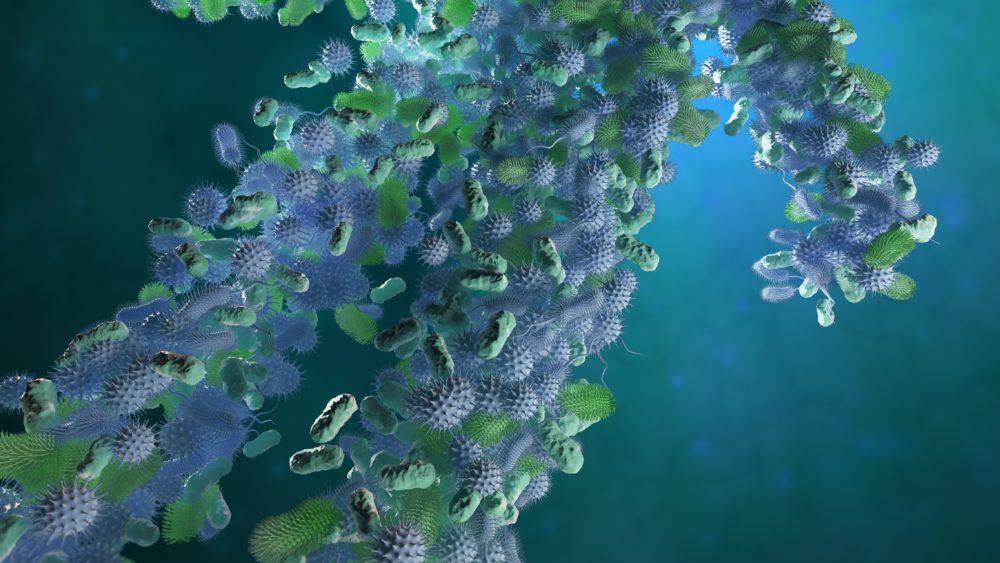THOSE who take part in clinical trials often have to do nasty things, from taking new drugs to forgoing sleep. Participants in a trial organized by Stanley Hazen of the Cleveland Clinic, in Ohio, had a decidedly easier task: eating steak. After reading Dr. Hazen’s conclusions, though, they may be inclined to eat rather less of it.
A link between red-meat consumption and heart disease was perceived by epidemiologists several decades ago, but the nature of this link has never been properly explained. Blame’s finger usually points at saturated fats and cholesterol. Red meat contains both. But a big recent study showed no connection between saturated fat and heart disease, so something else is probably involved. Dr Hazen thinks he knows what. As he outlines in a paper just published in Nature Medicine, he believes the blame actually lies with the microbiome—the collection of 100 trillion or so bacteria that live in the human gut.
Generally, members of the microbiome get on well with their host. They digest complex carbohydrates that human enzymes cannot handle, thus increasing the nutritional value of food. They also fend off infections by hostile bugs. But, as with any partnership, the interests of the partners are not always in perfect alignment, and Dr. Hazen thinks the processing of red meat is an example of such misalignment. The mismatch in question revolves around a molecule called carnitine. This chemical helps transport fatty acids inside cells, and red meat is rich in it. Dr. Hazen thinks that when it is metabolized by gut bacteria, a chain of events begins that results in atherosclerosis (hardening of the arteries).
A GUT FEELING
Dr. Hazen has already demonstrated, in a paper published in 2011, that parts of the microbiome can promote atherosclerosis. In that paper he showed that choline, a molecule found in eggs and meat, is digested by some gut bacteria to produce trimethylamine, which is then processed in the liver to create trimethylamine N-oxide, or TMAO—a substance that encourages atherosclerosis. That is bad in general. And if the arteries in question are the coronary arteries, which supply heart muscle with blood, it is bad in particular because it can lead to a heart attack.
Carnitine is chemically similar to choline so, given its abundance in red meat (and also the fact that those who choose not to eat meat often take carnitine supplements to make up for a perceived lack of the molecule), Dr Hazen wanted to know if it, too, might be linked with heart disease. He also wanted to know how TMAO wreaks its havoc on arteries.
Attempting to answer these questions required several studies, on both mice and men. The first involved five human volunteers eating 8oz sirloin steaks (about 225 grams), plus a carnitine supplement. This diet resulted in high levels of both carnitine and TMAO in the volunteers’ blood. But when the same people were given antibiotics to kill their gut microbes, a subsequent steak meal produced little TMAO, even though their carnitine levels went even higher than before. Production of TMAO, then, seems to need bacteria.
Those bacteria are not, however, always present. In the interests of science, Dr Hazen persuaded a vegan volunteer to eat a steak. He compared this man’s subsequent TMAO levels with those of a meat eater after a steak meal. The carnivore’s TMAO levels jumped. The vegan’s did not. That suggests the vegan’s particular gut flora—adapted to his usual meat-free diet—did not contain species that can digest carnitine. Some vegetarian volunteers, given carnitine pills but spared the steak, showed similar results.
To find out whether all this matters, Dr. Hazen looked at the association between heart disease and levels of carnitine and TMAO in more than 2,500 people. He found there was indeed an association between heart disease and carnitine, but only when TMAO levels were also high. Experiments in mice confirmed the broader hypothesis: TMAO production relies on microbes that digest carnitine, and prolonged consumption of that chemical by susceptible mice leads to atherosclerosis.
Exactly how this happens is still hazy. Dr. Hazen has shown, in yet further experiments on mice, that microbe-generated TMAO interferes with liver enzymes that make bile acids—substances that help remove excess cholesterol. TMAO also influences cholesterol metabolism in other parts of the body, including the artery wall. But the precise chain of events linking microbes to heart disease is still unclear.
Another unknown is which of the microbiome’s many species are responsible for promoting TMAO production. Based on an analysis of the feces of both vegetarians and meat eaters, Dr Hazen suspects bacteria of several genera, including Clostridium and Fusibacterium.
Regardless of the details, though, this study suggests that people looking for the link between heart disease and the eating of meat have been ignoring two culprits, carnitine and bacteria. That does not absolve cholesterol of blame—on the contrary, carnitine boosts cholesterol’s pernicious effect. But the study is yet another reminder that medical science’s past failure to take proper account of humanity’s bacterial guests has stopped researchers understanding how bodies actually work. Heart disease is the biggest killer around. Though Dr Hazen’s analysis does not change advice about how to prevent atherosclerosis (inter alia, eat meat sparingly), it may radically revise the treatment of those for whom prevention has failed.


